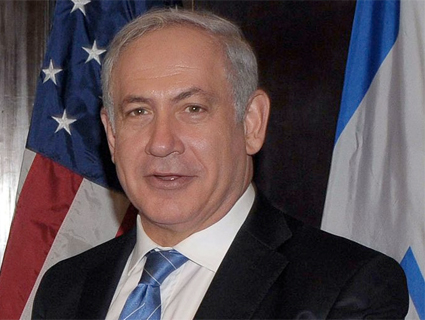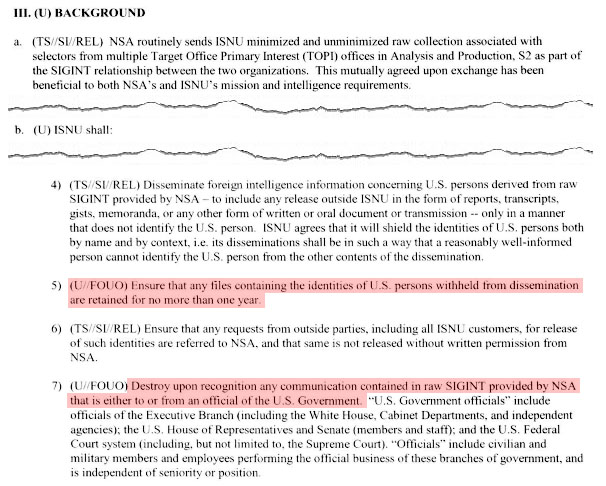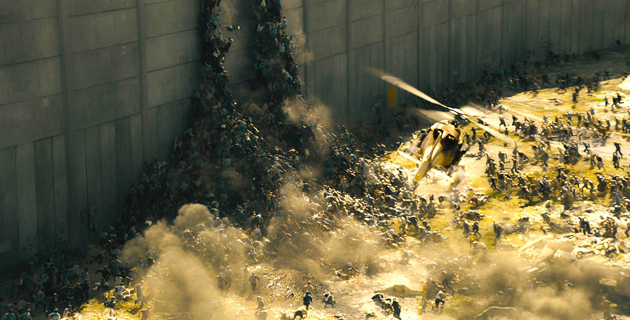
<a href="http://commons.wikimedia.org/wiki/File:Benjamin_Netanyahu_on_September_14,_2010.jpg">State Department photo</a>/Wikimedia Commons
This story first appeared on the TomDispatch website.
From the podium of the U.N. General Assembly, Israeli Prime Minister Benjamin Netanyahu seamlessly blended frightening details of Iranian evildoing with images of defenseless Jews “bludgeoned” and “left for dead” by anti-Semites in nineteenth century Europe. Aimed at US and Iranian moves towards diplomacy and a war-weary American public, Netanyahu’s gloomy tirade threatened to cast him as a desperate, diminished figure. Though it was poorly received in the US, alienating even a few of his stalwart pro-Israel allies, his jeremiad served a greater purpose, deflecting attention from his country’s policies towards the group he scarcely mentioned: the Palestinians.
Back in November 1989, while serving as a junior minister in the Likud-led governing coalition of Prime Minister Yitzhak Shamir, a younger Netanyahu told an audience at Bar Ilan University, “Israel should have taken advantage of the suppression of demonstrations [at China’s Tiananmen Square], when the world’s attention was focused on what was happening in that country, to carry out mass expulsions among the Arabs of the Territories. However, to my regret, they did not support that policy that I proposed, and which I still propose should be implemented.”
![]() Now the country’s top official, Netanyahu has updated the smokescreen strategy. While the prime minister ranted against Iran in New York City and in a meeting with President Obama in the Oval Office, his government was preparing to implement the Prawer Plan, a blueprint for the expulsion of 40,000 indigenous Bedouin citizens of Israel from their ancestral Negev Desert communities that promised to “concentrate” them in state-run, reservation-style townships. Authored by Netanyahu’s planning policy chief, Ehud Prawer, and passed by a majority of the members of the mainstream Israeli political parties in the Knesset, the Prawer Plan is only one element of the government’s emerging program to dominate all space and the lives of all people between the river (the Jordan) and the sea (the Mediterranean).
Now the country’s top official, Netanyahu has updated the smokescreen strategy. While the prime minister ranted against Iran in New York City and in a meeting with President Obama in the Oval Office, his government was preparing to implement the Prawer Plan, a blueprint for the expulsion of 40,000 indigenous Bedouin citizens of Israel from their ancestral Negev Desert communities that promised to “concentrate” them in state-run, reservation-style townships. Authored by Netanyahu’s planning policy chief, Ehud Prawer, and passed by a majority of the members of the mainstream Israeli political parties in the Knesset, the Prawer Plan is only one element of the government’s emerging program to dominate all space and the lives of all people between the river (the Jordan) and the sea (the Mediterranean).
Expulsions in the Desert
On September 9th, I visited Umm al-Hiran, a village that the state of Israel plans to wipe off the map. Located in the northern Negev Desert, well behind the Green Line (the 1949 armistice lines that are considered the starting point for any Israeli-Palestinian negotiations) and inside the part of Israel that will be legitimized under a US-brokered two-state solution, the residents of Umm al-Hiran are mobilizing to resist their forced removal.
In the living room of a dusty but impeccably tidy cinderblock home on the outskirts of the village, Hajj al-Ahmed, an aging sheikh, described to a group of colleagues from the website Mondoweiss and me the experience of the 80,000 Bedouin living in what are classified as “unrecognized” villages. The products of continuous dispossession, many of these communities are surrounded by petrochemical waste dumps and have been transformed into cancer clusters, while state campaigns of aerial crop destruction and livestock eradication have decimated their sources of subsistence.
Although residents like al-Ahmed carry Israeli citizenship, they are unable to benefit from the public services that Jews in neighboring communities receive. The roads to unrecognized villages like Umm al-Hiran are lined with electric wires, but the Bedouins are barred from connecting to the public grid. Their homes and mosques have been designated “illegal” constructions and are routinely marked for demolition. And now, their very presence on their own land has been placed in jeopardy.
Under the Prawer Plan, the people of Umm al-Hiran will be among the 40,000 Bedouins forcibly relocated to American-Indian-reservation-style towns constructed by the Israeli government. As the fastest growing group among the Palestinian citizens of Israel, the Bedouins have been designated as an existential threat to Israel’s Jewish majority. “It is not in Israel’s interest to have more Palestinians in the Negev,” said Shai Hermesh, a former member of the Knesset and director of the government’s effort to engineer a “Zionist majority” in the southern desert.
According to the website of the Or Movement, a government-linked organization overseeing Jewish settlement in the Negev, residents of the unrecognized villages will be moved to towns constructed “to concentrate the Bedouin population.” In turn, small Jews-only communities will be constructed on the remnants of the evicted Bedouin communities. They will be guaranteed handsome benefits from the Israeli government and lavish funding from private pro-Israel donors like the billionaire cosmetics fortune heir Ron Lauder. “The United States had its Manifest Destiny in the West,” Lauder has declared. “For Israel, that land is the Negev.”
When I met al-Ahmed, he described a group of 150 strangers who had suddenly appeared at the periphery of his village the previous day. From a hilltop, he said, they had surveyed the land and debated which parcels each of them would receive after the Prawer Plan was complete. Al-Ahmed called them “the Jews in the woods.”
Several hundred meters east of Umm al-Hiran lies the Yattir Forest, a vast grove in the heart of the desert planted by the para-governmental Jewish National Fund (JNF) in 1964. The JNF’s director at the time, Yosef Weitz, had headed the governmental Transfer Committee that orchestrated the final stages of Palestinian removal in 1948. For Weitz, planting forests served a dual strategic purpose: those like Yattir near the Green Line were to provide a demographic buffer between Jews and Arabs, while those planted atop destroyed Palestinian villages like Yalu, Beit Nuba, and Imwas would prevent the expelled inhabitants from returning. As he wrote in 1949, once Israel’s Jewish majority had been established through mass expulsion, “The abandoned lands will never return to their absentee [Palestinian Arab] owners.”
As darkness came to the desert, I set out with my colleagues into the piney woods of Yattir. In a small car, we wound along its unlit roads until we reached a gate bristling with barbed wire. This was the settlement-style village of Hiran—”the Jews in the woods,” as al-Ahmed had put it. We called out into the night until the gate was opened. Then we parked in the middle of a compound of trailer homes. Like a shtetl in the Pale of Settlement, the hard-bitten Imperial Russian territory once reserved for Jewish residency, the place exuded a sense of suspicion and siege.
A bearded religious nationalist stepped out of an aluminum-sided synagogue and met us at a group of picnic benches. His name was Af-Shalom and he was in his thirties. He was not, he said, permitted to speak until a representative from the Or Movement arrived. After a few uncomfortable minutes and half a cigarette, however, he began to hold forth. He sent his children, he told us, to school over the Green Line in the settlement of Susiya, just eight minutes away on an Israelis-only access road. He then added that the Bedouins were “illegals” occupying his God-given land and would continue to take it over unless they were forcibly removed. Just as Af-Shalom was hitting his stride, Moshe, a curt Or Movement representative who refused to give his last name, arrived to escort us out without a comment.
“The World’s Biggest Detention Center”
Only a few kilometers from Umm al-Hiran, in the southern Negev Desert and inside the Green Line, the state of Israel has initiated another ambitious project to “concentrate” an unwanted population. It is the Saharonim detention facility, a vast matrix of watchtowers, concrete blast walls, razor wire, and surveillance cameras that now comprise what the British Independent has described as “the world’s biggest detention center.”
Originally constructed as a prison for Palestinians during the First Intifada, Saharonim was expanded to hold 8,000 Africans who had fled genocide and persecution. Currently, it is home to at least 1,800 African refugees, including women and children, who live in what the Israeli architectural group Bikrom has called “a huge concentration camp with harsh conditions.”
 Like the Bedouins of the Negev’s unrecognized villages, the 60,000 African migrants and asylum seekers who live in Israel have been identified as a demographic threat that must be purged from the body of the Jewish state. In a meeting with his cabinet ministers in May 2012, Netanyahu warned that their numbers could multiply tenfold “and cause the negation of the State of Israel as a Jewish and democratic state.” It was imperative “to physically remove the infiltrators,” the prime minister declared. “We must crack down and mete out tougher punishments.”
Like the Bedouins of the Negev’s unrecognized villages, the 60,000 African migrants and asylum seekers who live in Israel have been identified as a demographic threat that must be purged from the body of the Jewish state. In a meeting with his cabinet ministers in May 2012, Netanyahu warned that their numbers could multiply tenfold “and cause the negation of the State of Israel as a Jewish and democratic state.” It was imperative “to physically remove the infiltrators,” the prime minister declared. “We must crack down and mete out tougher punishments.”
In short order, the Knesset amended the Infiltration Prevention Act it had passed in 1954 to prevent Palestinian refugees from ever reuniting with the families and property they were forced to leave behind in Israel. Under the new bill, non-Jewish Africans can be arrested and held without trial for as long as three years. (Israel’s Supreme Court has invalidated the amendment, but the government has made no moves to enforce the ruling, and may not do so.) The bill earmarked funding for the construction of Saharonim and a massive wall along the Israeli-Egyptian border. Arnon Sofer, a longtime Netanyahu advisor, also urged the construction of “sea walls” to guard against future “climate change refugees.”
“We don’t belong to this region,” Sofer explained.
In that single sentence, he distilled the logic of Israel’s system of ethnocracy. The maintenance of the Jewish state demands the engineering of a demographic majority of nonindigenous Jews and their dispersal across historic Palestine through methods of colonial settlement. State planners like Sofer refer to the process as “Judaization.” Because indigenous Palestinians and foreign migrants are not Jews, the state of Israel has legally defined most of them as “infiltrators,” mandating their removal and permanent relocation to various zones of exclusion—from refugee camps across the Arab world to walled-off West Bank Bantustans to the besieged Gaza Strip to state-constructed Bedouin reservations to the desert camp of Saharonim.
As long as the state of Israel holds fast to its demographic imperatives, the non-Jewish outclass must be “concentrated” to make room for exclusively Jewish settlement and economic development. This is not a particularly humane system, to be sure, but it is one that all within the spectrum of Zionist opinion, from the Kahanist right to the J Street left, necessarily support. Indeed, if there is any substantial disagreement between the two seemingly divergent camps, it is over the style of rhetoric they deploy in defense of Israel’s ethnocracy. As the revisionist Zionist ideologue Ze’ev Jabotinsky wrote in his famous 1923 “Iron Wall” essay outlining the logic of what would become Israel’s deterrence strategy, “there are no meaningful differences between our ‘militarists’ and our ‘vegetarians.'”
During the Oslo era, the time of hope that prevailed in mid-1990’s Israel, it was the “dovish” Labor Party of Yitzhak Rabin and Ehud Barak that began surrounding the Gaza Strip with barricades and electrified fencing while drawing up plans for a wall separating the West Bank from “Israel proper.” (That blueprint was implemented under the prime ministership of Ariel Sharon.)
“Us over here, them over there” was the slogan of Barak’s campaign for reelection in 1999, and of the Peace Now camp supporting a two-state solution at the time. Through the fulfillment of the Labor Party’s separationist policies, the Palestinians of Gaza and the West Bank have gradually disappeared from Israel’s prosperous coastal center, consolidating cities like Tel Aviv as meccas of European cosmopolitanism—”a villa in the jungle,” as Barak said.
With the post-Oslo political transition that shattered Israel’s “peace camp,” ascendant right-wing parties set out to finish the job that Labor had started. By 2009, when Israel elected the most hawkish government in its history, the country was still full of “infiltrators,” the most visible of whom were those African migrants, deprived of work permits and increasingly forced to sleep in parks in south Tel Aviv. According to a report by the newspaper Haaretz on a brand new Israel Democracy Institute poll on Israeli attitudes, “Arabs no longer top the list of neighbors Israeli Jews would consider undesirable, replaced now by foreign workers. Almost 57% of Jewish respondents said that having foreign workers as neighbors would bother them.”
Unrestricted by the center-left’s pretensions to tolerance, rightist members of the government launched a festival of unprecedented racist incitement. Interior Minister Eli Yishai of the Shas Party (replaced after the 2013 election), for example, falsely described African asylum seekers as infected with “a range of diseases” and lamented that they “think the country doesn’t belong to us, the white man.”
“Until I can deport them,” he promised, “I’ll lock them up to make their lives miserable.”
At a May 2012 anti-African rally in Tel Aviv, on a stage before more than 1,000 riled up demonstrators, Knesset member and former Israeli army spokesperson Miri Regev proclaimed, “The Sudanese are a cancer in our body!” Incited into a violent frenzy, hundreds of protesters then rampaged through south Tel Aviv, smashing the windows of African businesses and attacking any migrant they could find. “The people want the Africans to be burned!” they chanted.
As during other dark moments in history, eliminationist cries booming from an urban mob against a class of outcasts signaled a coming campaign of ethnic purification. And following the night of shattered glass, the cells of Saharonim continued to fill up.
Going South
Just as Western media consumers will find details about the Prawer Plan and the Saharonim camp hard to come by, casual visitors to the Negev Desert will find little evidence of the state’s more disturbing endeavors. Instead, highway signs will direct them to a little museum at Sde Boker, the humble kibbutz that Israel’s first prime minister, David Ben Gurion, called home.
In Ben Gurion’s memoirs, he fantasized about evacuating Tel Aviv and settling five million Jews in small outposts across the Negev, where they would be weaned off the rootless cosmopolitanism they inherited from diaspora life. Just as he resented the worldly attitude of Jews from Tel Aviv and New York City, Ben Gurion was repelled by the sight of the open desert, describing it as a “criminal waste” and “occupied territory.” Indeed, from his standpoint, the Arabs were the occupiers. As early as 1937, he had plans for their removal, writing in a letter to his son Amos, “We must expel Arabs and take their places.”
Ben Gurion’s house is an austere-looking, single-story structure, sparsely furnished and poorly lit. The separate, spartan bedrooms he and his wife slept in are impeccably preserved, as though they might return home at any time. Nearby is a compact, somewhat shabby museum commemorating his legacy in a series of exhibits that do not appear to have been updated for at least a decade.
The site is a crumbling remnant of a bygone era that the country has left in the dust. The enlightened public of Israel’s coastal center has turned its back on the desert, preferring instead to face toward the urbane capitals of Europe, while the rest of the country draws increasing energy from the religious nationalist fervor emanating from the hilltops of the occupied West Bank. In the Negev, perhaps all that endures of Ben Gurion’s legacy is the continuous expulsion of the Bedouins.
On a gravelly path leading towards his home, a series of plaques highlight tidbits of wisdom from that Israeli founding father. One quote stands out from the others. Engraved on a narrow slab of granite, it reads, “The State of Israel, to exist, must go south.”
Max Blumenthal is an award-winning journalist whose work has appeared in the New York Times, the Los Angeles Times, the Daily Beast, the Nation, the Huffington Post, the Independent Film Channel, Salon.com, Al Jazeera English, and other publications. He is the author of the bestselling book Republican Gomorrah. His new book, just published, is Goliath: Life and Loathing in Greater Israel (Nation Books)
Follow TomDispatch on Twitter and join us on Facebook or Tumblr. Check out the newest Dispatch book, Nick Turse’s The Changing Face of Empire: Special Ops, Drones, Proxy Fighters, Secret Bases, and Cyberwarfare. To stay on top of important articles like these, sign up to receive the latest updates from TomDispatch.com here.













